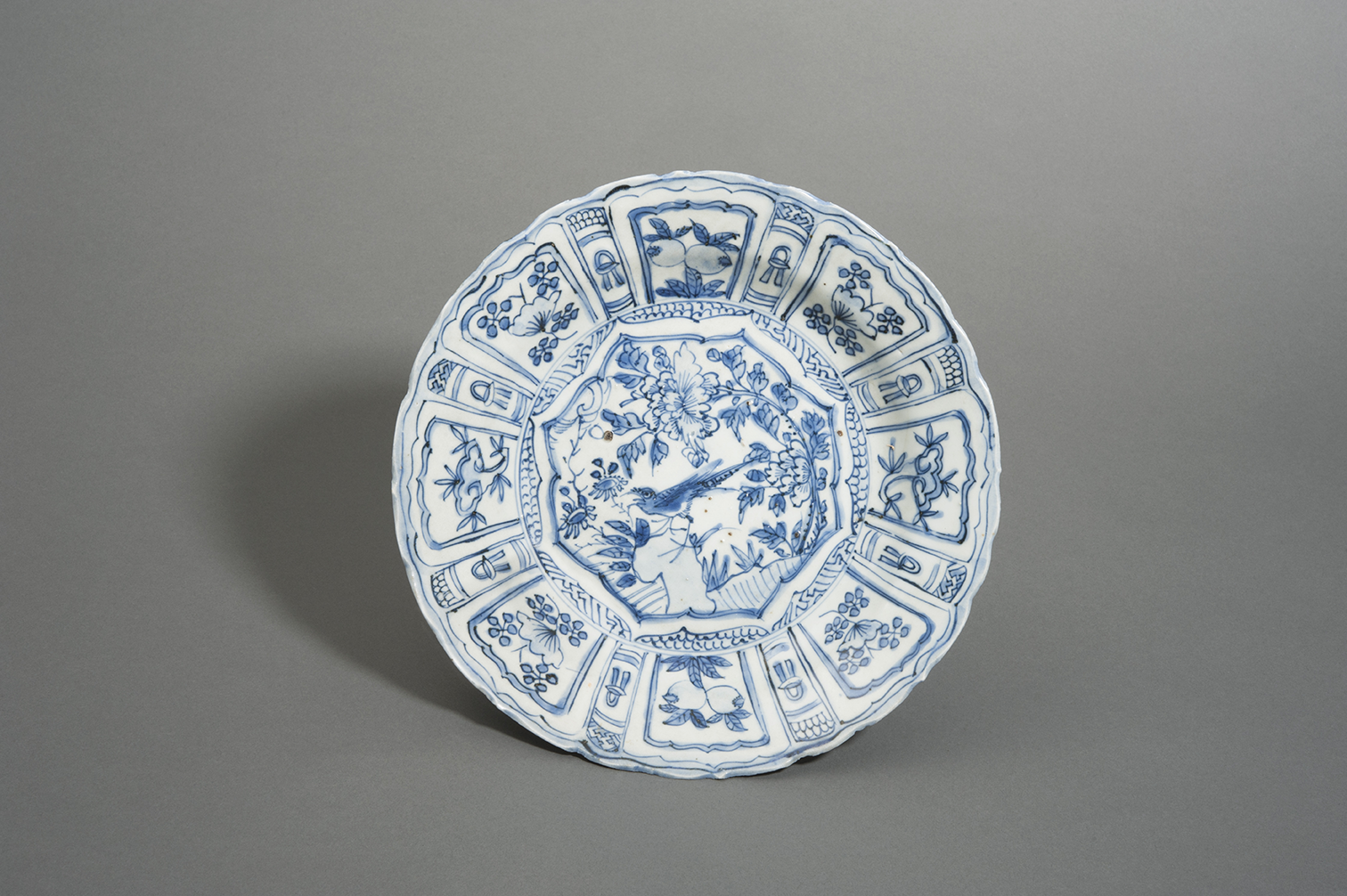Plate (Kraak)
| Object Title | Plate (Kraak) |
| Origin | Jingdezhen, China |
| Date | Ming dynasty, Chongzhen period, 1628–1644 |
| Material | Porcelain |
| Dimensions | diameter 23 cm |
| Collection | Hong Kong Maritime Museum |
| Accession No. | HKMM2014.0010.0001 |
Distinctive borders of decorative panels were a key feature of thinly potted porcelains called kraak wares that came to dominate the Chinese ceramics trade in the seventeenth century. Mass produced from the late Wanli period (1572–1620) and into the early Qing dynasty (1644–1911) for export within Asia and to Europe, they take their name from the Dutch term for Portuguese merchant ships called caracca. Standard shapes for kraak included bowls, cups and dishes, as well as more specifically Western forms like butter dishes, mustard pots, saltcellars and wine pots. Large plates or chargers were among the most expensive items in European inventories, while smaller examples like this plate from the Hatcher cargo (a Chinese junk that sank near Batavia in 1643) were more affordable.
They were widely depicted in early seventeenth century Dutch paintings, such as still lifes by Floris van Dijck (1575–1621) and Osias Beert (ca. 1580–1623).
